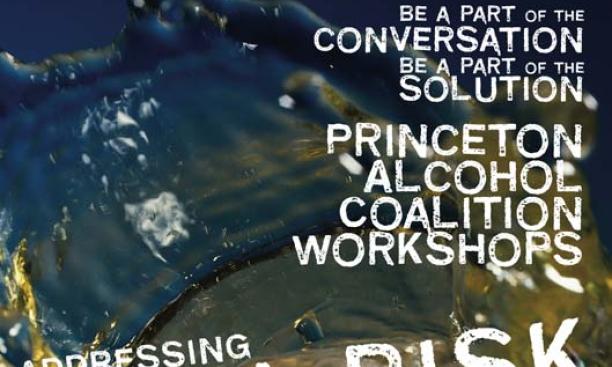
At Princeton, as at colleges and universities across the country, high-risk drinking and the behaviors associated with it are a serious concern. The past two decades have witnessed many efforts to reduce the level and impact of high-risk drinking on our campus, ranging from educational initiatives to new disciplinary policies to the creation of substance-free housing, but the leadership behind these measures has consisted largely of administrators and trustees. This year, however, students are standing front and center as our University community adopts a new and potentially transformative approach to confronting the problem of high-risk drinking.
In the fall of 2007, under the aegis of the Healthier Princeton Advisory Board (the permanent successor to the Task Force on Health and Well-Being that I commissioned in 2003), an Alcohol Coalition Committee (ACC) was formed to develop a strategic plan to address high-risk drinking on the part of undergraduates—the greatest single threat to their health and well-being on our campus. The ACC was not established in response to a particular incident but, rather, was charged with proactively creating an environment in which this issue could be candidly, thoughtfully, and collectively addressed. Co-chaired by Professor of Electrical Engineering and Master of Butler College Sanjeev Kulkarni and Agatha Offorjebe ’09, and composed of 20 students, faculty, and staff, the ACC made inclusiveness its watchword, and this inclusiveness has been the key to its success.
For one thing, it did not define high-risk drinking in terms of individual consumption but rather as “any time the health, well-being, or safety of the individual drinking or others is compromised or when community standards are compromised.” This allowed it to embrace the concerns and solicit the input of every member of our University community, as well as looking at Princeton’s social climate and behaviors as a whole. In other words, high-risk drinking was framed as everyone’s problem, a spectrum stretching from the alcohol abuser to the caregiver in McCosh Health Center to the student whose quality of life is adversely affected by the over-indulgence of others.
This breadth can be seen in the ACC’s slogan, “Be a part of the conversation; be a part of the solution,” an invitation extended to faculty, staff, alumni, community partners, and, above all, students. Not only did students form a majority on the ACC itself, they co-chaired its three campus-wide workshops and turned out in droves to share their views. Having attended one of these workshops myself, I can vouch for their desire to come to grips with high-risk drinking and for the seriousness and creativity of their ideas. This was a chance to make their voices heard, and they did so with conviction, whether the topic was the role of alcohol in relieving academic pressure, the impact of the academic calendar on drinking practices, or the obligations of students to both intoxicated friends and strangers.
The organizational structure of the ACC and the process it followed in order to understand and, ultimately, change the culture of high-risk drinking on our campus is arguably the most important outcome of its work. Inspired by the “bottom- up” strategic planning process that Professor Kulkarni and his colleague Kyle Vanderlick spearheaded at the School of Engineering and Applied Science, the ACC convened meetings with 31 “stakeholders”—groups as diverse as the Inter-Club Council, the Department of Public Safety, and borough and township officials. The workshops I mentioned were also designed to elicit as wide a range of views as possible. Organized thematically, each four-hour workshop was planned and directed by a committee representing students, faculty, and staff, many of whom were not themselves members of the ACC. The participants were also broadly representative of our University community, with students predominating, and it was their suggestions and opinions, elicited through small group discussions and general give-and-take, that formed the heart of the ACC’s strategic plan (www.princeton.edu/reports/alcohol-20080509/).
The plan is less a set of specific recommendations than a framework in which to pursue a spectrum of policies that will, we hope, reduce the incidence of high-risk drinking and lessen its negative impact on campus life. To this end the ACC proposed—and the University has welcomed—the creation of a permanent body to build on its accomplishments, together with ad hoc working groups that will flesh out individual initiatives. The ACC also identified five strategic areas that are key to addressing high-risk drinking: education; policies, procedures, and discipline; activities, programs, and events; structures and environment; and communication and partnerships. To give you just a taste of the ideas that emerged beneath these rubrics, the ACC found strong support for peer mentoring that models and encourages healthy behaviors, for a party registration system that would allow “mixed-age” gatherings in full compliance with the law and the University’s own standards of behavior, for additional alcohol-free, late-night programming on Thursday and Saturday, for enhanced relationships with local officials, and for a re-evaluation of the online alcohol education course that currently forms part of freshman orientation.
Some of these initiatives have already been launched; others will be the subject of further discussion, but the most important legacy of the ACC is the inclusive spirit that informed its work and the standard of openness, transparency, and engagement that it set for all who hope to address the problem of high-risk drinking at Princeton and beyond.
